We continue our dive into mushrooms with a heavy hitter: reishi mushroom! Most things that are good for us don’t taste great, and unfortunately, the reishi mushroom is part of this camp. As a result, this mushroom doesn’t have much use in the culinary world, but there are many benefits to this fungus, and you will want to include it in your protocol in spite of its taste. Today, we go into the history and uses of reishi and what makes it a great addition to your cancer-fighting protocol. Let’s get started!
*Note: Please keep in mind that I am not a doctor and you should not take the following information as a replacement for advice from a licenced professional. Always consult with a member of your healthcare team before starting any new supplements or natural compounds. The following information has not been evaluated by the FDA.
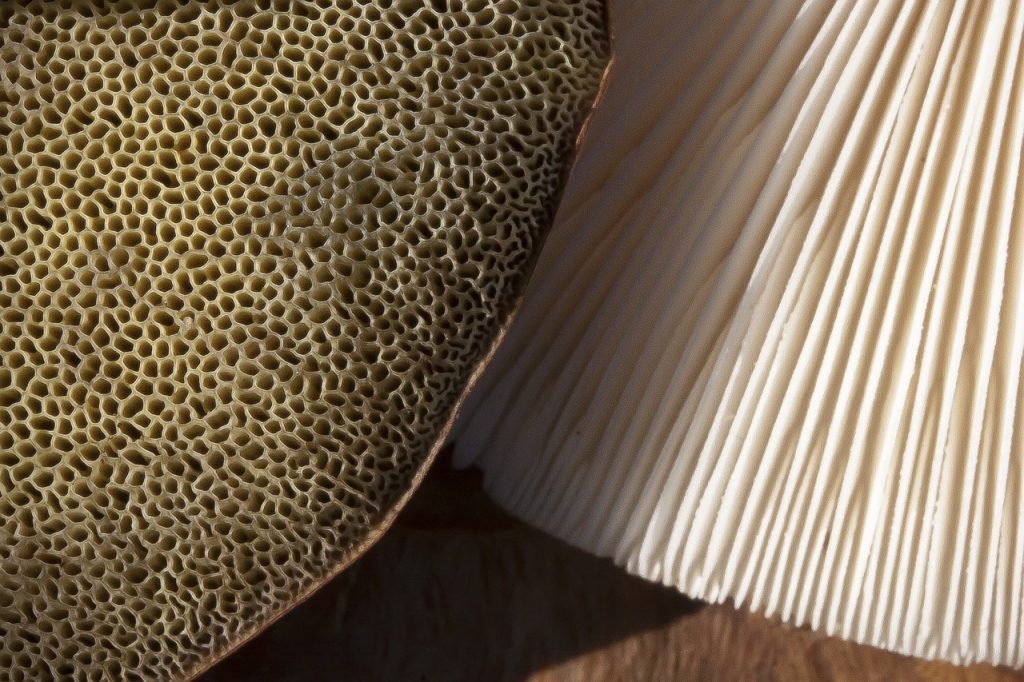
Reishi Review
Also known as Lingzhi and “the mushroom of immortality”, reishi mushroom has been revered in traditional Chinese medicine for over 2000 years. In the wild, they are extremely rare. They grow at the base and on the stumps of deciduous trees, favouring the maple in particular, but only 2-3 trees out of 10,000 will grow them! For today’s modern market, reishi is grown on hardwood logs and sawdust [1].
The reishi mushroom has quite a distinctive appearance. Its cap is smooth and flat, red, shiny, and kidney shaped, while its texture is soft and cork-like. Unlike many of the culinary mushrooms that we are more familiar with, reishi mushrooms have pores on their underside instead of gills and release their spores through these little pin prick holes [1].
The species of reishi traditionally used in medicine is the Ganoderma lucidum, and it is found growing in warmer areas like Asia, the south Pacific, southern Europe, and the Southeastern United States, so if you live in one of these areas keep an eye out for them! They are pretty easy to identify thanks to their unique appearance and they don’t have any poisonous look alikes, making them a great starter mushroom for those new to foraging [2].
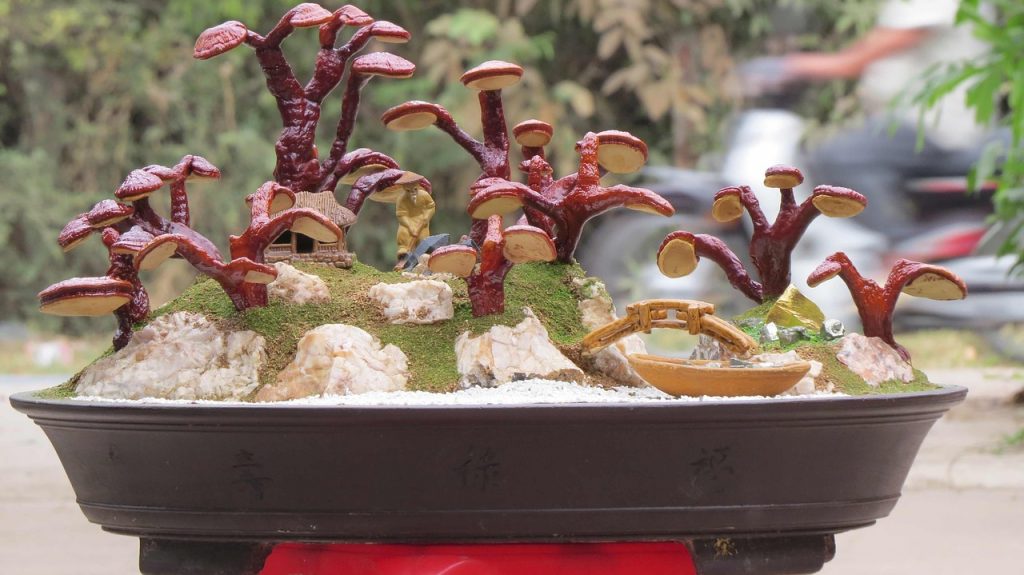
What’s their deal?
In traditional Chinese medicine, reishi mushrooms have been called “magic” and “drugs of immortality”. I’ll take some of that! They are further classified into six categories based on colour that are believed to support different parts of the body: red for the heart, green for the liver, yellow for the spleen, white for the lungs, black for the kidneys, and purple for the Essence [1]. As such, reishi has historically been used in this branch of ancient medicine for everything from boosting the heart qi and supplementing the center, to sharpening the wits and improving memory, to preventing senility and prolonging life, thereby gaining its nickname “the mushroom of immortality” [1]. They are so popular and important, considered to be a good luck charm, that people even grow them into beautiful displays for their homes, as pictured above.
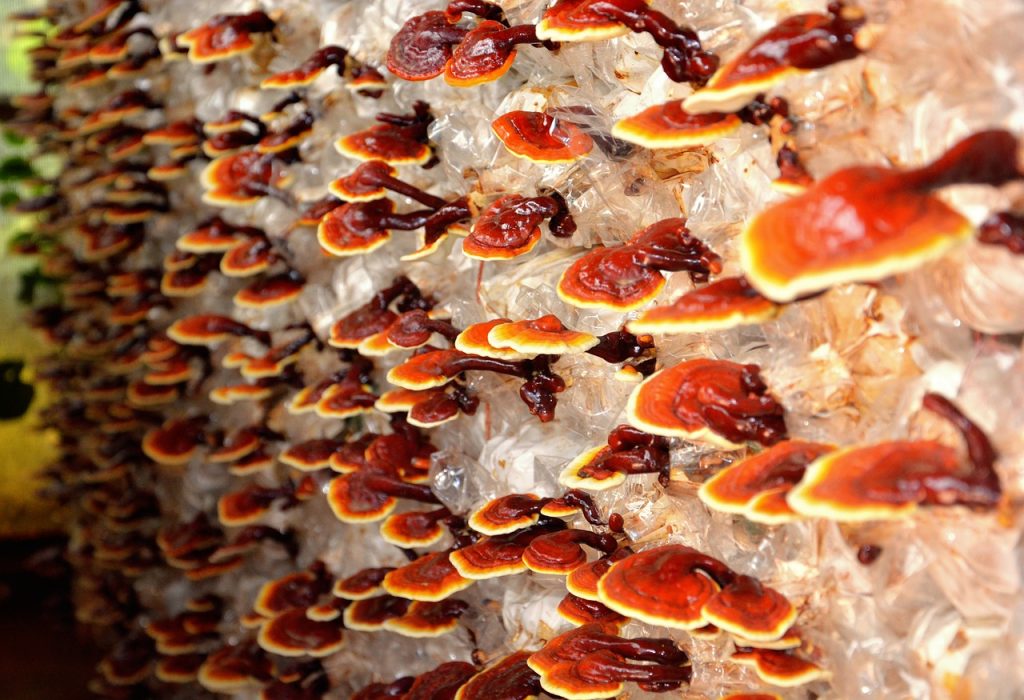
Cancer Crusader
The active compounds in reishi that are used against cancer cells are polysaccharides (long-chain carbohydrates), peptidoglycans (polymers consisting of sugars and amino acids), and terpenes (similar to essential oils, terpenes give the plants that produce them their distinctive tastes and smells, often deterring animals from eating them). Like most natural compounds and cancer, well-designed human trials are needed to fully explore and confirm reishi’s benefits for this disease. The research that has been done with animal models, however, is very promising.
Tumouricidal Effects
Reishi has been found to be a very effective killer of cancer cells. Cancer cells are so dangerous and form tumours because they have mutated and no longer listen to the direction to die or to stop replicating. Their cell cycle therefore continues on and on, making more and more cells that in turn make more cells, and eventually a tumour forms. One study from 2004 found reishi to be the most effective of 58 mushrooms tested at killing cancer cells, and various studies using both human and mice cancer cells have found reishi to be effective at inducing apoptosis (programmed cell death) and inducing cell-cycle arrest, stopping their indiscriminate replication [3]. These studies have been done with many different types of cancer as well, including breast, lung, sarcoma, prostate, leukemia, liver, cervical, and more, suggesting that reishi is effective against many different types of cancer cells [3].
Reishi arrests cell cycles by regulating the expression of a number of different genes within cancer cells at different points in the cycle. For example, reishi extract arrested the cell cycle in a line of estrogen-dependent breast cancer cells by decreasing the expression of estrogen receptors, and in various human cell lines, reishi extract was shown to suppress the progression of the G1 phase (the time between cell division and before DNA replication) [3]. Apoptosis usually accompanies these cycle arrests, caused by a number of different things depending on the type of cancer cells used. A terpene-rich extract from reishi induced apoptosis in a premalignant cell line by increasing the early apoptosis marker annexin-V, and in lung tumor cells, the pure compound ganoderic acid T (a compound isolated from reishi mushrooms) caused mitochondrial dysfunction and cell death [3].
Preventing Angiogenesis
A tumour needs a constant supply of blood to feed its consistent growth, so tumours form blood vessels to achieve this, a process called angiogenesis. A main action of many anticancer compounds is the halting or preventing of this process. Angiogenesis also aids in the metastasis of cancer because cancer cells spread through these blood vessels to other parts of the body.
The anti-angiogenic effects of reishi have been shown in two main ways. In a study done with chicken embryos, reishi extract was proven to reduce the formation of microvessels around the embryo [3]. Additionally, in studies done with both prostate and lung cancer cells lines, two angiogenic growth factors were suppressed by reishi extract through the inhibition of cell signalling [3]. As tumour growth and metastasis are two of the greatest fears for cancer patients, the effects of reishi that have been seen so far are very exciting.
Preventing Metastasis
Reishi extract again has been shown to exhibit a number of anti-metastasizing effects. In one 2002 study, it was seen to inhibit proteins that regulate cell adhesion (stickiness) and motility in highly invasive breast and prostate cancer cells, and a 2004 study showed that cell adhesion, invasion, and colony formation of breast cancer cells were significantly inhibited on exposure to reishi extracts [3]. Further, another study demonstrated that reishi extracts reduced the formation of fiber and adhesion complexes of bladder cancer cells, two things that aid a cancer cell in taking up residence somewhere else in the body [3]. Other effects on metastasis have been seen as well, including the prevention of invasion by cancer cells [3].
Immunomodulating Properties
There is considerable evidence supporting the immune-enhancing properties of reishi mushrooms. First, a brief overview of some important parts of the immune system (if you remember this from the shiitake post, you can skip down to the next paragraph). Macrophages are white blood cells that detect and destroy threats to your body and also release molecules called cytokines that activate other immune cells [4]. Dendritic cells are like the sentinels of your immune system and are responsible for the initiation of an immune response [5], making them quite important to your immune system! These next two are some of the most important components when it comes to cancer. Cytotoxic T cells kill tumours and virally infected cells [6], while Natural Killer cells play a vital role in the detection and control of the early sign of cancer [7]. T and B lymphocytes (a family of immune cells that Cytotoxic T cells belong to) are important components of your immune system. They are highly specialized defender cells that recognize pathogens and respond by quickly multiplying to create an army of identical cells to fight the invader. It is also due to these cells that we develop an immunity to certain viruses and bacteria, because they “remember” the pathogen and make you immune to future attacks [8]. Finally, splenocytes can be any one of the different white blood cell types and that are situated specifically in or come from the spleen; they consist of a variety of cells such as T and B lymphocytes, dendritic cells and macrophages [9].
So, how do reishi mushrooms play a role in all of this? Various studies from 2001 to 2008 proved that different components from reishi enhanced the proliferation and maturation of T and B lymphocytes, NK cells, and dendritic cells [3]. Another study from 2009 showed that a polysaccharide-rich extract of reishi promoted the proliferation of splenocytes and enhanced the activities of macrophages and NK cells, and yet another study found that a commercial reishi extract activated tumor necrosis factor alpha [3], a protein that is responsible for a number of signalling events within a cell that lead to necrosis or apoptosis of that cell [10].
There are such an incredible number of effects that reishi mushrooms have on the components of our immune system that I couldn’t touch on all of them here, but if you are interested in reading more, head over to the referenced link (number 3) and skip down to the section on immunomodulation.
Chemopreventive Effects
Reishi is not only effective against cancer cells, but it can support you through conventional treatments of radiation and chemotherapy, reducing side effects and boosting their efficacy. Preclinical findings have revealed that it can alleviate the nausea associated with chemo, increase the efficacy of radiation, and promote the sensitivity of some cancer cells to certain chemo agents [11].
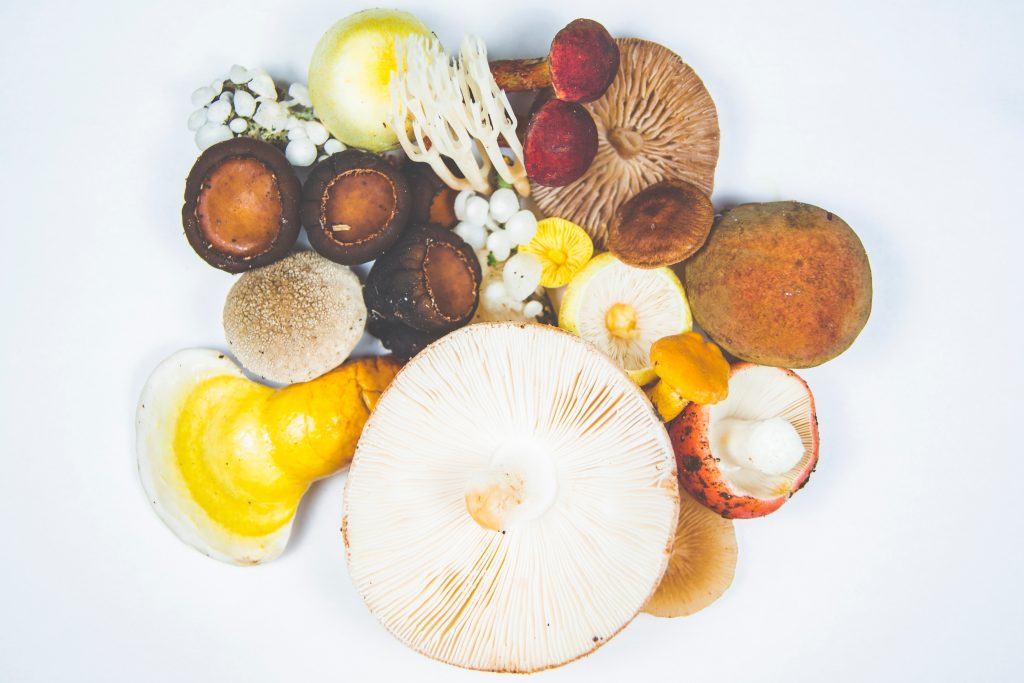
These fungi sound fantastic! But what do I even do with them?
*These recommendations are similar to those in the previous parts of this series and will continue to be so for the remainder of the series as well, with the exception of a few additions from mushroom to mushroom. I will always put the new additions at the top, so feel free to read just the new one(s) or the full list if you want a review or haven’t read the other posts in this series.
There are a few different ways to use reishi mushrooms. Due to its strong taste, some are easier to incorporate than others while some methods result in easier absorption. When it comes down to it though, you want to pick the method which will be the easiest for you to maintain; from my experience, no matter how good something is for you, if it is a hassle to do and not relatively easy to fit into your routine, eventually you will drop it.
Capsules
Since this particular mushroom tastes very much like medicine, capsules are the easiest and most pleasant method for adding reishi to your protocol. For reishi, the usual dose can range from 2 to 4 capsules a day that are often either 500mg or 1000mg. This method is super easy to work into your routine, as many of us are already taking supplements and it doesn’t take much to add one more. The issue with capsules is that they can be difficult for your body to absorb, so if you know that you have trouble making proper use of supplements, you may be better off choosing one of the following options.
Powder in smoothies or broth
If you already have smoothies in your diet, a great way to get your reishi in is to buy it in powder form and add a teaspoon to your smoothie. It is important to mention though that reishi is very bitter and can overpower the smoothie. I used to take my mushroom powders this way and, although it wasn’t delicious, I didn’t mind the taste too much and took them this way for months.
Although this is a convenient option for those making smoothies anyway and a fine choice if it is the easiest for you to maintain, smoothies do tend to be cold and, like the other varieties of medicinal mushrooms I have discussed, reishi mushrooms are better absorbed when they are warm: “[…] medicinal mushrooms have low bioavailability unless they undergo a hot water extraction process. Meaning, we are not able to absorb mushrooms’ nutrients because the fungi lock their immune activating beta-glucans and polysaccharides in chitin cell walls, which are indigestible to humans” [12]. So, make sure your capsules and powders were hot-water extracted by the manufacturer, and then it is best to take them using something warm. A way to do this is to whisk a teaspoon of reishi powder into some bone broth or soup. The mushroomy flavour goes well with the savory broth, making the bitterness more palatable, and the heat makes it easier for your body to absorb.
There is much controversy over soy as a phytoestrogen for those who have/had hormone driven cancers, but most experts agree that the less processed and fermented forms are fine to include in your diet in moderation and can actually help to prevent the recurrence of hormone positive cancers, although the results of research have been varied. Miso soup then is a tasty base to which to add your reishi powder, and I find that it covers the unpleasant-tasting reishi better than other broths. Plus, you are also getting a fermented food into your diet, which your gut buddies will love!
I love this mushroom broth recipe from Handmade Apothecary. Although I haven’t tried it with reishi mushrooms because of their taste, it might be palatable for you (especially when used in a dish and not on its own) and is worth a try. You can use it as a base for soups, stews, gravy, curries and more! I love this one because it makes it easier to work mushrooms into your regular diet. Anytime a recipe calls for stock, you can use this broth. This recipe uses turkey tail and chaga mushrooms, but you can either swap out the chaga for reishi or you can use all three and see how it tastes! I would recommend making a small batch first and seeing how you like the taste, otherwise you may end up wasting a bunch of mushrooms.
Tea with powder or by boiling mushroom pieces
If soup isn’t your thing, another way to use heat to up the absorption factor is by making reishi tea. You can make a tea quite easily by boiling pieces of the dried or fresh fungus. Simply add about 1 tablespoon of mushroom pieces for dried and 2 tablespoons for fresh to 2 cups of boiling water, boil for 20-30 minutes, strain and enjoy. Leftover tea can be stored in the fridge for 3-4 days.
If you already have or can only find reishi powder, you can also whisk a teaspoon of powder into a cup of boiling water, add some lemon or a peppermint tea bag, and enjoy! As I said above, reishi is quite bitter, so you may find the taste too strong. If you do, try adding a little honey or waiting for it to cool and calling on your early twenties to treat it like a shot and just down it!
Ready-made products
If the homemade smoothie, soup or tea options aren’t for you, there are lots of ready-made mushroom products on the market that make including them in your diet more palatable. My favourite company by far is Four Sigmatic for the quality and variety of their products. Plus, they are such nice people!
Whether you get them from Four Sigmatic or not, some of the types of products you can expect to find include
- Coffees
- Teas
- Chocolates
- Protein Powders
- Elixirs
Play around with all of these options and see which works best for you. I personally take my reishi as a powder often in broth because I have a big bag of it to use up. Whenever I have a bowl of soup (which is quite often) I whisk in a teaspoon of reishi powder. It is a convenient way to incorporate it because I’m having soup anyway and it often masks the flavour enough.
Remember, consistency is key. Even if it isn’t all absorbed, some mushroom every day is better than not having any at all, so try them out and see which method fits most comfortably into your routine. And if you find another way to include mushrooms in your diet, a tasty recipe or a more convenient method, please feel free to share it in the Facebook group or let me know via the “Contact Me” page here.
Happy Healing ❤️
References
- Lingzhi Mushroom – https://en.wikipedia.org/wiki/Lingzhi_mushroom
- Foraging Reishi Mushrooms https://practicalselfreliance.com/foraging-reishi-mushrooms/
- Chapter 9 – Ganoderma lucidum (Linazhi or Reishi): A Medicinal Mushroom – https://www.ncbi.nlm.nih.gov/books/NBK92757/
- Macrophages – https://www.immunology.org/public-information/bitesized-immunology/c%C3%A9lulas/macrophages
- Dendritic Cells – https://www.immunology.org/public-information/bitesized-immunology/cells/dendritic-cells
- Helper and Cytotoxic T Cells – https://www.immunology.org/public-information/bitesized-immunology/c%C3%A9lulas/helper-and-cytotoxic-t-cells
- Natural Killer Cells – https://www.immunology.org/public-information/bitesized-immunology/c%C3%A9lulas/natural-killer-cells
- Who am I?: What do T- and B-cells do? http://whoami.sciencemuseum.org.uk/whoami/findoutmore/yourbody/whatdoesyourimmunesystemdo/howdoesyourimmunesystemwork/whatdot-andb-cellsdo
- Splenocyte – https://en.wikipedia.org/wiki/Splenocyte
- TNF alpha and the TNF receptor superfamily: structure-function relationship(s). – https://www.ncbi.nlm.nih.gov/pubmed/10891884
- Reishi Mushroom – https://www.ascopost.com/issues/august-10-2018/reishi-mushroom/
- Why People are Shrooming Out on Medicinal Mushroom Tea – https://www.eater.com/2015/3/11/8181107/why-people-are-shrooming-out-on-medicinal-mushroom-tea

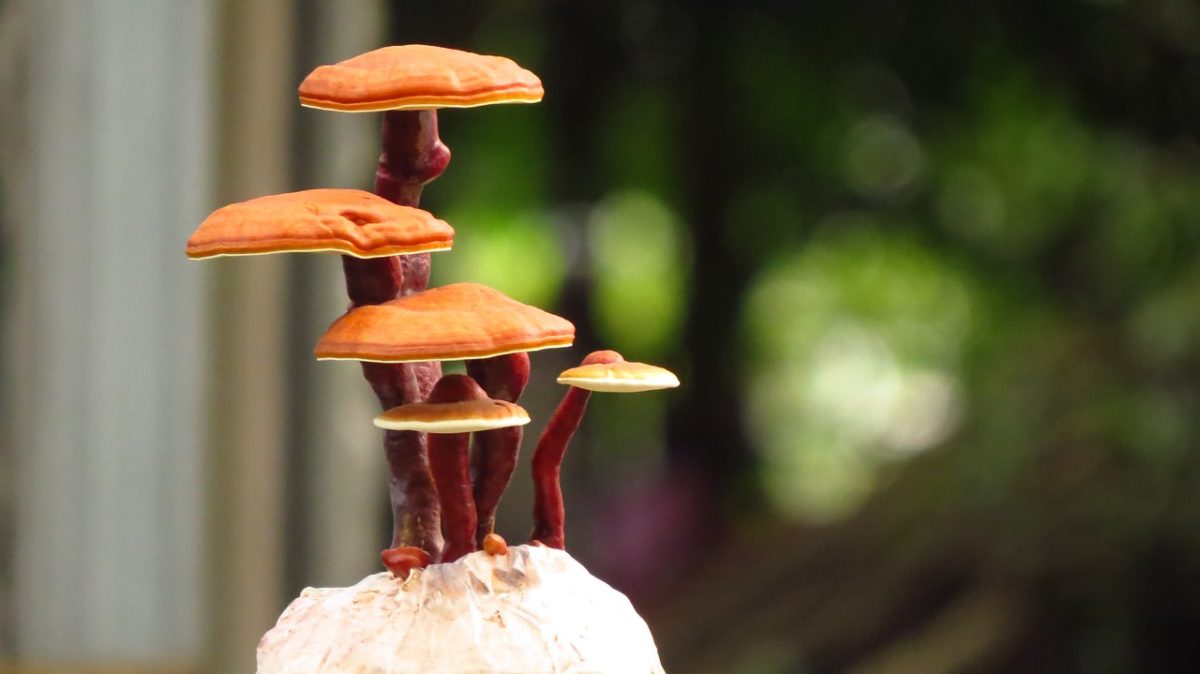


0 Comments